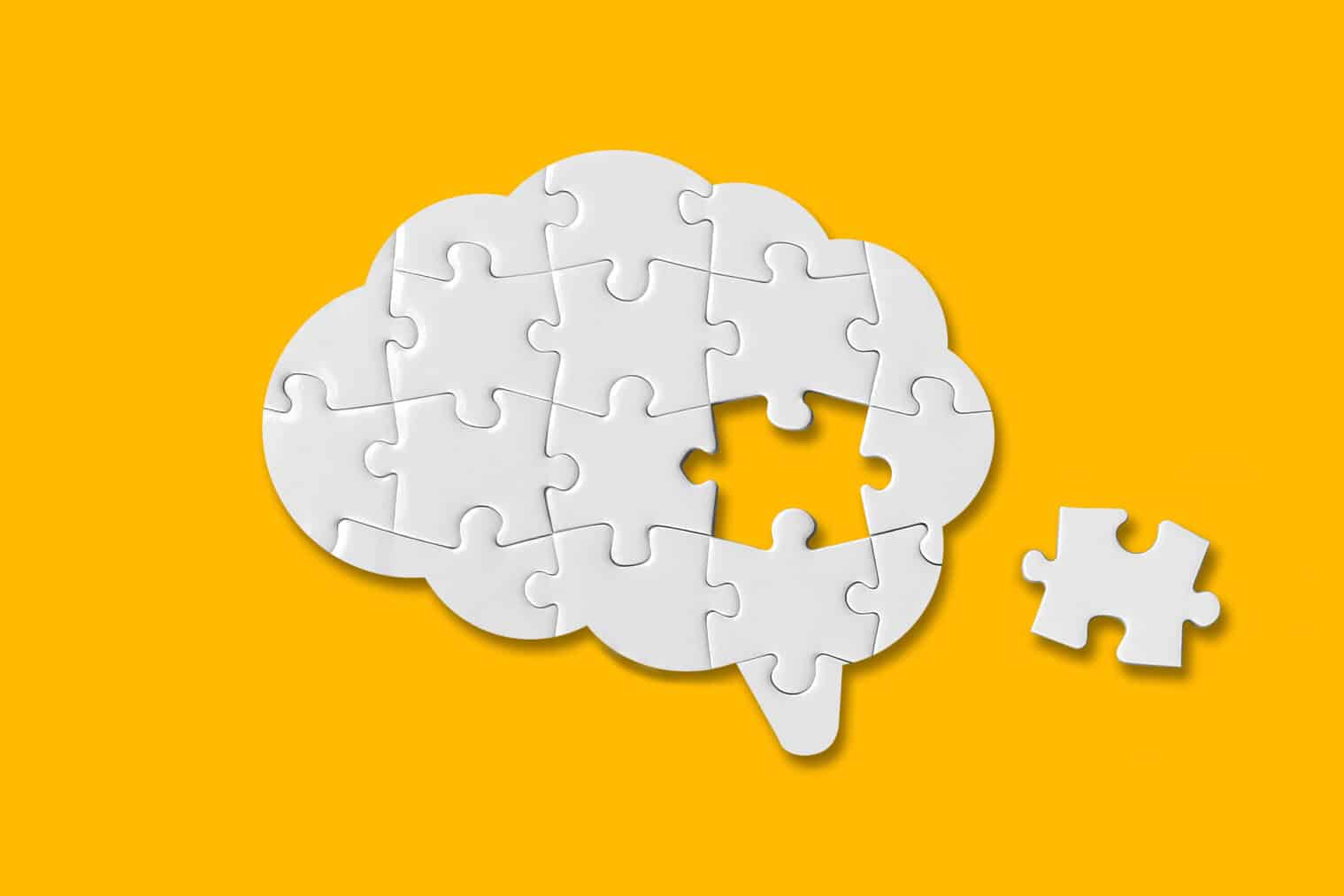
Promoting Mental Health at Work: The Impact of Gamification
The modern workplace is often characterized by high levels of stress, pressure, and long hours, leading to a significant impact on employees’ mental health.
Addressing mental health in the workplace has become an essential aspect of maintaining a productive and healthy workforce. In recent years, the concept of gamification has gained attention as a potential solution to promote mental health at work.

Understanding Gamification and its Potential in Mental Health
What Is Gamification?
Gamification, derived from game design principles, enhances engagement, motivation, and participation by integrating game-like elements into non-gaming contexts.
In marketing, companies use gamified loyalty programs and interactive challenges to strengthen customer engagement and loyalty. Additionally, gamified fitness apps motivate users to maintain a healthier lifestyle through step counters and exercise goals. In employee training, interactive games improve skill retention and performance.
Gamification also enhances productivity and collaboration in project management tools with elements like progress bars and leaderboards. Across various fields, gamification enriches experiences and drives positive outcomes.
Gamification for mental health
Gamification is a powerful approach for addressing mental health in the workplace, promoting well-being, and fostering a positive environment. Mental health stigma often hinders employees from seeking help, but gamification creates a safe and engaging space for them to participate in mental health initiatives without fear of judgment.
Unlike traditional programs that may struggle with low engagement, gamification offers rewards and tracking, motivating employees to stay committed and form positive habits. Through various activities, employees develop resilience and coping skills to manage workplace stress effectively.
Gamified platforms collect data on employees’ mental health progress, enabling personalized support based on individual needs. Encouraging regular breaks, relaxation exercises, and work-life balance, gamification reduces stress and improves mental well-being.
Additionally, some gamified activities provide a creative outlet for employees to express emotions and share experiences. This early warning system helps identify employees in need of extra support and intervention.
Why gamification is effective in promoting mental health
Gamification taps into intrinsic motivation, making mental health activities more enjoyable and fulfilling for your employees. By setting clear goals and providing a sense of accomplishment, gamification fosters a positive cycle of progress and competence, boosting self-esteem and motivation. Through positive reinforcement and rewards, gamification encourages continuous engagement and a positive outlook on mental health.
As employees master coping mechanisms and gain control over their well-being, their self-efficacy and resilience increase. Social elements in gamification create a supportive environment, reducing feelings of isolation and enhancing a sense of belonging, benefiting employees’ mental well-being. Gamification introduces activities that promote relaxation, stress relief, and mindfulness, inducing a state of calmness by activating the parasympathetic nervous system.
The brain’s release of dopamine during gamified achievements reinforces positive associations with mental health activities, motivating employees to continue their engagement. Engaging in enjoyable gamified activities acts as a distraction from negative thoughts, enabling employees to focus on constructive aspects of their mental health. Overall, gamification effectively nurtures employees’ mental well-being, empowering them to embrace positive mental health practices willingly. By incorporating gamification into mental health initiatives, employers can create a more engaging and supportive work environment, leading to happier, healthier, and more productive employees.

Identifying Workplace Mental Health Challenges
Common mental health challenges faced by employees
Common mental health challenges in the workplace include stress and burnout, often caused by pressure to meet deadlines and overwhelming workloads. Anxiety disorders are prevalent, triggered by job uncertainty and high-pressure environments. Depression can profoundly impact productivity and performance, exacerbated by factors like job dissatisfaction or lack of support.
Certain professions face work-related trauma, potentially leading to post-traumatic stress disorder. Loneliness and isolation are concerning issues, especially with remote work arrangements.
Workplace bullying and harassment cause severe psychological distress, affecting mental well-being and retention. Grief and loss can impact employees emotionally, requiring compassionate support. Substance abuse and addiction pose challenges, demanding organizations to prioritize employee support and resources.
Perfectionism and imposter syndrome contribute to heightened anxiety and stress. Mental health stigma hinders open discussions and support, preventing employees from seeking help.
Unaddressed mental health issues can have far-reaching consequences
Reduced work performance is a critical result, as mental health issues can hinder concentration, decision-making, and task management. To counter this, organizations should prioritize employee well-being and provide support and resources to improve work performance. Increased absenteeism is another consequence, as employees may need time off to manage their mental health.
Presenteeism can also become a concern due to mental health issues. By prioritizing mental health support, organizations can reduce both absenteeism and presenteeism and improve productivity. Higher turnover rates can occur when employees feel unsupported, leading them to seek more understanding work environments elsewhere. To retain talent, organizations must prioritize mental health support and create a supportive culture.
Decline in employee engagement is a result of unaddressed mental health issues, leading to reduced enthusiasm for work-related tasks. Organizations can combat this by fostering a supportive work environment and offering resources for mental well-being. Neglecting employee well-being can damage the organization’s reputation, affecting its ability to attract talent and form partnerships.
By prioritizing mental health, you can protect your reputation and enhance your employer brand. Investing in mental health support not only improves the well-being and performance of current employees but also helps attract top talent and foster a positive organizational culture. As a result, employees feel valued, supported, and motivated, leading to higher job satisfaction, increased productivity, and ultimately, a more successful organization.

Exploring the Benefits of Gamification in the Workplace
Positive impact of gamification on employee well-being
Gamification in mental health programs has a positive impact on employee engagement and participation. The interactive and enjoyable nature of gamified activities attracts higher levels of engagement compared to traditional methods. This leads to a more receptive and enthusiastic workforce, fostering a positive work environment.
Various studies demonstrate the positive impact of gamification on mental health outcomes. Participants reported significant improvements in their mental well-being, reducing stress levels and increasing resilience. This highlights gamification’s potential as a powerful tool in promoting mental well-being. Gamification enhances employee motivation to take charge of their mental health. It incentivizes employees to set and accomplish mental health goals, leading to higher levels of self-efficacy and empowerment. This fosters a more proactive and resilient workforce.
Gamified mental health programs effectively reduce mental health-related absenteeism. Employees become better equipped to handle workplace pressures, resulting in reduced time off due to mental health issues and improved overall productivity.
Gamification also plays a significant role in team building and fostering social support among colleagues. Team-based challenges encourage collaboration, creating a safe and welcoming environment to discuss mental health concerns.
Furthermore, gamification provides organizations with data-driven insights into employee participation and mental health progress. Analyzing this data allows for informed decision-making and optimization of mental health initiatives. Organizations can identify trends, assess the effectiveness of specific activities, and tailor interventions to better suit employees’ needs.
Gamified mental health programs promote sustainable employee well-being. Employees continue to engage in self-care practices even after the program’s conclusion, contributing to a happier, healthier, and more resilient workforce.
Significantly benefiting employees’ well-being and overall work experience
Gamification increases employee engagement in mental health programs by utilizing captivating and interactive activities. Game-like elements, rewards, and progress tracking appeal to employees’ intrinsic motivation, fostering a sense of accomplishment as they achieve mental health goals. This heightened engagement leads to a more proactive and enthusiastic workforce, benefiting their mental health, job satisfaction, and overall productivity.
Gamification positively impacts emotional well-being by engaging employees in stress-relief challenges and mindfulness exercises. These activities build emotional resilience, enabling employees to handle challenges effectively and maintain a balanced mindset. Gamified programs empower employees to proactively manage their mental health by providing resources to cope with stress effectively. This empowerment leads to a more resilient and motivated workforce, equipped to handle workplace challenges and maintain a healthy work-life balance.
Participating in gamified mental health programs reduces stress and develops emotional resilience among employees, fostering personal growth and fulfillment. Investing in employee well-being through gamification demonstrates appreciation, leading to higher job satisfaction, commitment, and productivity. Gamification promotes long-term behavior change, turning mental health activities into sustainable habits.
A healthier and more engaged workforce benefits the organization with improved employee retention, reduced absenteeism, and enhanced productivity, providing a competitive edge in the market. By leveraging gamification, organizations can create a workplace culture that prioritizes mental health, supports employee well-being, and encourages proactive self-care practices.
Through these initiatives, you not only improve the overall mental health and well-being of your employees but also strengthen your workforce, leading to increased productivity, higher job satisfaction, and greater employee loyalty. Ultimately, embracing gamification in mental health programs yields positive outcomes for both you and your employees, fostering a positive and thriving work environment that nurtures the growth and success of everyone involved.
Fostering a sense of community and support among colleagues
Gamified mental health programs encourage teamwork and collaboration through team-based challenges and activities. Employees work together to achieve common goals, fostering camaraderie and a collaborative spirit. This creates a supportive community within the workplace, where colleagues uplift and encourage each other.
Friendly competition generates a positive atmosphere where employees cheer for each other’s successes, promoting support and encouragement. The collaborative nature of gamified programs builds trust among team members, fostering empathy and understanding. By incorporating mental health into everyday activities, it becomes a natural part of workplace conversations, reducing stigma.
Gamified mental health initiatives promote empathy among employees, leading to a more supportive and compassionate workplace culture. When organizational leaders support gamified mental health programs, it reinforces the importance of creating a culture of community and well-being. This top-down support prioritizes employee mental health, benefiting the entire organization.
By fostering a sense of togetherness and support, gamified mental health programs contribute to a positive work environment where employees feel valued, connected, and encouraged to prioritize their well-being. This inclusive culture can lead to higher levels of job satisfaction, increased engagement, and improved overall employee morale.
Moreover, as mental health conversations become more commonplace, employees are more likely to seek help and support when needed, knowing that it is accepted and encouraged within the organization. This can lead to earlier intervention and better mental health outcomes for individuals.

Integrating Gamification into Mental Health Programs
Thoughtful and well-planned approach
Identifying the most beneficial areas for gamification is crucial, such as stress management, mindfulness, work-life balance, and emotional well-being. Design interventions that resonate with employees’ well-being goals. Setting clear objectives is vital for successful implementation. Define specific and measurable goals, like increased engagement, reduced stress, and improved emotional well-being. Use data-driven decisions to optimize the program’s impact.
Tailor the gamification approach to align with your unique culture, values, and demographics. Customize the strategy for a more relatable and meaningful experience for employees. Select platforms that suit your needs, ensuring convenient access for employees. Prioritize data privacy and security to protect personal information.
Craft engaging and meaningful activities to effectively promote well-being. Motivate employees to proactively manage their mental health through rewards and progress tracking. Encourage regular participation with a clear schedule and reminders. Regular engagement enhances the positive impact on mental health.
Promote a supportive culture where employees feel safe discussing mental health. Raise awareness of mental well-being’s impact and the availability of resources to support employees. By identifying the most relevant areas for gamification, organizations can create targeted interventions that align with their employees’ well-being goals. For instance, incorporating stress management activities can help employees cope with work-related pressures, while mindfulness exercises can improve emotional resilience.
Setting clear and measurable objectives allows organizations to track the effectiveness of their gamified mental health programs. By using data to make informed decisions, they can optimize the program’s impact and tailor it to better suit employees’ needs.
Customizing the gamification approach to the organization’s unique culture and values fosters a more relatable and meaningful experience for employees. This personalization enhances engagement and ensures the program’s relevance.
Selecting platforms that are accessible and secure ensures that employees can easily participate without concerns about privacy and data protection.
Crafting engaging and meaningful activities is essential to keep employees motivated in managing their mental health. Incorporating rewards and progress tracking incentivizes employees to take proactive steps toward their well-being.
Promoting a supportive culture encourages open discussions about mental health, breaking down stigma, and ensuring that employees feel comfortable seeking help when needed. Raising awareness about mental well-being and available resources further supports employees in their journey toward better mental health.
Tailor-made approaches to mental health initiatives
Customized approaches in mental health programs capture employees’ attention and interest. Incorporating familiar language, symbols, and values makes the initiatives more relatable and engaging, encouraging active participation and ownership of well-being. Acknowledging and respecting workplace diversity, tailored programs ensure accessibility and relevance for employees from different backgrounds. Customization addresses specific needs, such as stressors faced by different generations like millennials and Gen Z.
In global organizations, customization adapts programs to local cultures and regulations, ensuring compliance and sensitivity to regional contexts. Consideration of diverse groups, such as employees with disabilities or minority backgrounds, fosters inclusivity, strengthening a sense of belonging and support.
Resonating with employees, customized approaches lead to lasting impact, increased engagement, and improved overall mental health. Feedback-driven improvements allow mental health initiatives to remain relevant and effective over time, supporting employees’ well-being proactively.
By embracing customized mental health programs, organizations can create meaningful connections with their employees, demonstrating a genuine commitment to their well-being. The use of familiar language, symbols, and values fosters a sense of understanding and connection, making employees more receptive to engaging in mental health activities.
Addressing the diverse needs of employees ensures that mental health resources are accessible and relevant to everyone. This inclusivity promotes a supportive and caring workplace culture, where employees feel valued and understood, enhancing their sense of belonging.
Customization is particularly crucial for global organizations, allowing them to adapt mental health programs to different cultural contexts and local regulations. This approach ensures that employees worldwide can benefit from the initiatives, fostering a cohesive and unified approach to well-being.
Moreover, tailoring mental health programs to cater to specific stressors faced by different generations, such as millennials and Gen Z, enables organizations to address unique challenges effectively.
By gathering feedback from employees, organizations can continuously improve and refine their mental health initiatives. This feedback-driven approach ensures that the programs remain relevant, engaging, and impactful, leading to lasting positive effects on employee well-being.

Addressing Challenges and Concerns
Acknowledge potential drawbacks and limitations
Excessive focus on rewards in gamified programs may overshadow the actual mental health benefits, potentially undermining intrinsic motivation for well-being improvement. While the novelty of gamified activities initially boosts participation, sustaining long-term engagement requires thoughtful design and continuous adjustments.
Some employees may resist or doubt the effectiveness of gamification, associating it with recreational gaming rather than a serious mental health tool. Personalized support may be lacking in gamification, necessitating a comprehensive approach that combines individualized assistance with gamified activities.
Data privacy concerns arise from collecting and analyzing employee data for gamification, demanding secure and compliant data handling. Gamification’s stress management focus may overlook underlying workplace issues that contribute to mental health challenges.
Ensuring the gamified mental health program remains relevant and effective demands ongoing evaluation and updates. Gamification is not a standalone solution for complex mental health issues, and organizations should adopt a holistic approach with realistic expectations.
While gamification can enhance mental health initiatives, an overemphasis on rewards may distract from the program’s actual benefits. Organizations should strike a balance between extrinsic motivators and the inherent value of well-being improvement to maintain employees’ genuine engagement.
The initial excitement of gamified activities may wane over time, necessitating ongoing adjustments to keep employees interested and committed to their mental health journey.
Some employees may be skeptical about the effectiveness of gamification in addressing mental health, requiring clear communication and education to build trust and promote participation.
To ensure employees receive personalized support, organizations should complement gamification with individualized assistance, recognizing that each person’s mental health journey is unique.
Protecting employees’ privacy and data is critical when using gamification, requiring secure and compliant data handling to maintain trust and confidentiality.
While gamification can be a valuable tool, it should not overshadow deeper workplace issues that contribute to mental health challenges. You must address underlying stressors and foster a supportive work environment in tandem with gamified activities.
Regular evaluation and updates are essential to keep the gamified mental health program effective and aligned with employees’ evolving needs and preferences.
Lastly, you should view gamification as part of a broader approach to mental health, recognizing its limitations and integrating it with other comprehensive strategies for addressing complex mental health issues.
Overcoming resistance
Transparent communication is vital for the successful implementation of the gamified mental health program. Prioritizing transparent communication reinforces the program’s importance, building confidence among employees in its value and promoting their well-being. Open communication fosters active engagement with the program and encourages employees to seek support when needed, leading to a more effective impact on mental health and a healthier, happier, and more engaged workforce.
Educating and raising awareness about the program are critical steps for its successful promotion. Conducting educational sessions informs employees about the significance of mental health and well-being. Sharing success stories from other organizations that have implemented gamified mental health programs inspires and motivates employees, highlighting the potential benefits of such initiatives and encouraging active participation.
Involving employees in decision-making during the design and planning process is key. Seeking employee input fosters a sense of ownership and responsibility, encouraging them to embrace the gamified mental health program. Addressing misconceptions is essential to dispel doubts about gamified mental health initiatives. Emphasizing that gamification complements traditional interventions and provides engaging tools to support well-being helps leverage its potential.
Offering incentives effectively encourages employee participation. Rewards create a sense of achievement and motivation, leading to higher levels of engagement and better mental health outcomes. Securing leadership buy-in is crucial. Active involvement and support from leadership signal the organization’s commitment to mental health, encouraging open discussions and providing the necessary resources for successful implementation.
By prioritizing transparent communication, organizations can build trust and credibility, fostering a positive perception of the gamified mental health program. Educating employees about the program’s benefits and success stories from other organizations can inspire and motivate individuals to participate actively.
Engaging employees in the decision-making process empowers them to take ownership of their well-being journey, resulting in higher engagement and more meaningful outcomes. Addressing misconceptions ensures that employees understand the purpose and value of gamified mental health initiatives, increasing their willingness to embrace and utilize these tools effectively.
Offering incentives serves as a powerful motivator for sustained engagement, encouraging employees to actively participate in the program. Leadership buy-in signals a commitment to mental health and creates a supportive culture where employees feel comfortable seeking help and support.
Ethical considerations, data privacy, and potential addictive behavior
Ethical Considerations
To ensure ethical implementation, obtain informed consent from employees before engaging in the gamified mental health program. Clearly communicate the program’s purpose, data usage, and potential risks.
Encourage voluntary participation in gamified activities without any pressure or coercion.
Avoid using gamification to manipulate employees’ behavior or emotions. Instead, empower individuals to engage willingly in activities that support their well-being.
Data Privacy
When implementing the gamified program, limit data collection to only essential information, respecting employees’ privacy rights.
Provide the option for anonymous participation, particularly in sensitive activities or feedback surveys, when possible.
Prioritize data security by storing all employee data securely and safeguarding it against unauthorized access or breaches.
Potential Addictive Behavior:
It’s crucial to monitor and prevent excessive engagement with the gamified mental health program to maintain work-life balance and prevent neglect of other important tasks.
Consider setting time limits on specific gamified activities to promote moderation and ensure employees have time for other responsibilities.
Incorporate mindful design practices that encourage employees to take breaks and prioritize self-care while participating in the program. This ensures a healthy and balanced approach to mental well-being.
Fairness and Equity
To ensure a fair and inclusive approach, provide equal access to gamified mental health programs for all employees, irrespective of their position or department.
Avoid creating divisions based on participation, as this may lead to an unhealthy competitive culture. Instead, foster a supportive and inclusive environment for all employees.
Monitoring and Evaluation
Consistently monitor the impact of the gamified mental health program on employees’ well-being and engagement.
Regularly assess the program’s effectiveness in achieving mental health goals and make appropriate adjustments based on the evaluation.
Responsible Use of Rewards
Employ rewards and incentives responsibly in the gamified mental health program, ensuring they align with the program’s objectives and promote positive behavior without fostering unhealthy competition or unethical practices.
Ethical Gamification Design
Design gamification to support employees’ well-being while maintaining sensitivity and respect for mental health. Avoid trivializing or gamifying sensitive personal information or mental health challenges as part of the game mechanics.
Education and Support
Educate employees about the potential benefits and risks of gamification to promote responsible and mindful engagement. Offer resources and support for those who may be struggling with excessive engagement or addictive behavior to ensure a healthy and balanced participation in the program.
Conclusion
Gamification positively impacts workplace mental health by offering engaging and effective strategies to support employees’ well-being. It fosters a sense of community, reduces stigma, and promotes open communication about mental health.
A holistic approach to mental well-being is crucial in organizations as it recognizes mental health as a multifaceted aspect of overall well-being. It fosters a work environment that prioritizes employee mental health, leading to a thriving, productive, and engaged workforce. Key reasons for a holistic approach include providing comprehensive care, early detection, and intervention, promoting inclusivity, reducing stigma, and preventing burnout. It empowers employees and sustains high performance, reflecting an organization’s commitment to a positive culture.
Prioritizing employee well-being is crucial for fostering a positive and supportive organizational culture. Gamification offers a creative and engaging approach to promoting mental health initiatives, capturing employees’ attention, and motivating active participation. It equips employees with coping mechanisms, fosters a sense of community, and leads to improved productivity. Gamification allows tailoring initiatives to cater to diverse employee needs and empowers individuals to take responsibility for their mental well-being. Embracing gamification signals a commitment to prioritizing employee mental well-being, contributing to a resilient, engaged, and high-performing workforce.
